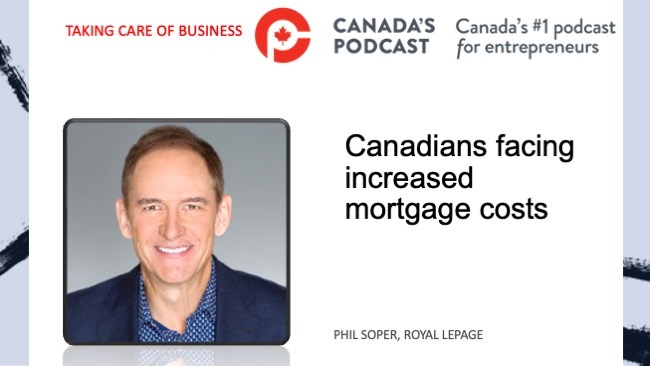The resilience of the Canadian consumer has been one of the biggest surprises of 2023 so far, and a key factor behind the Bank of Canada restarting its rate hike campaign in June, says a new report by CIBC Capital Markets.
Stronger-than-anticipated household consumption has accounted for the entirety of the upgrade to the BoC’s GDP forecast since the start of the year. However, cracks are starting to show, with the recovery in services consumption stalling at a level still below its pre-pandemic trend, and households starting to fall behind on some of their debt repayments. Because of that, consumer spending is expected to see little growth over the balance of 2023 and into 2024, resulting in a close brush with recession. That will open up some additional slack within the economy, seeing inflation ease further next year and allowing interest rate cuts to start before the middle of 2024, says the report Canadian consumer: Cracks beginning to show

Tim Douglas
“One of the reasons why consumption hasn’t fallen or slowed yet, even after historically swift rate hikes, is that the level of spending wasn’t particularly strong to begin with. While real consumer spending has continued to rise swiftly on average since rates starting to head higher, much of that spending can be linked to the reopening of the economy following Covid-19 lockdowns, as well as an easing of supply chain issues. The level of consumer spending, particularly in per capita terms, remains well below the trend it was on before the pandemic and relative to the 2017 rate hiking cycle. In particular, the rotation of consumer spending away from goods and back towards services that everyone was talking about before interest rates headed higher, has not fully happened,” says the report.
“While goods spending has eased back close to its pre-pandemic trend the recovery in services spending has slowed even at a level still well below its pre-pandemic trend. That could reflect a structural shift in spending patterns owing to the extension of remote work, which has limited demand for services, while boosting demand for durable goods. The excess demand that the Bank of Canada continues to refer to doesn’t really look excessive at all — at least compared to the spending behaviour of households prior to the pandemic. Instead, the excess demand is a combination of a recovery in demand, and a disappointing recovery in supply, not an overheated consumer sector. Indeed, consumption looks to have contracted in Q2 after a bounce Q1. Moreover, consumers in Canada remain more cautious than they were prior to 2020. While the household savings rate has fallen from the heights seen during the pandemic, it remains above the very low levels that were common just before the pandemic started. That’s in contrast to US households, who are saving less than they were in the prior cycle in order to maintain an elevated level of spending. While Canadian households’ credit card balances are now back to their earlier trend after having been run down dramatically during the pandemic, lines of credit are seeing less use in this higher interest rate environment. The gap between the current balance on lines of credit and the pre-pandemic trend is roughly $20 billion, or $1.4% of annual consumer spending.”
The CIBC says there are early indications that some are struggling in this higher interest rate environment. While bankruptcies remain historically low, proposals have risen above their pre-pandemic level even on a per capita basis.
“The proportion of indebted households that are behind with their monthly payments remains fairly low by historical standards, but that the fact that could reflect many mortgages have yet to be reset at higher interest rates. The proportion of loans in arrears for other types of consumer loans have generally risen more and most are now at levels above pre-pandemic norms. While the biggest test for mortgage renewals will come in 2025 and 2026, when many of the mortgages taken out during the pandemic are up for renewal, that doesn’t mean that the remainder of 2023 and 2024 won’t bring difficult decisions for some households. Indeed, from mid-2023 to the end of 2024, roughly one third of mortgages outstanding will need to be refinanced at a higher interest rate. Defaults are unlikely to soar given that the vast majority of these mortgages will be on units that are worth more than when purchased, so the sale of the property is still an exit strategy. But it will act to further restrict the amount of disposable income that households have to make other purchases,” says the report.
“And the trend in disposable incomes isn’t particularly strong to begin with, particularly in inflation adjusted terms. Indeed, real incomes have trended broadly sideways since 2020 and are now approximately 3% below their pre-pandemic trend . Lower income earners, who have the highest propensity to spend out of any additional incomes, have seen the weakest trend in real incomes. The ability to supplement real spending by running down savings or tapping into increased wealth has also been restricted by inflation. Although some households still have savings to fall back on that were accumulated during the pandemic, the overall financial wealth of households (including other assets as well as savings) has fallen short of its prior cycle trend across incomes quintiles.
“The cracks that are starting to show up in Canadian consumers’ spending behaviour and finances are expected to get gradually wider, as more households refinance mortgages at higher interest rates, and as the unemployment rate drifts higher. However, these cracks aren’t expected to turn into a chasm, in part due to the fact that households have already started to make some adjustments and aren’t spending excessively relative to pre-2020 norms. That also means that consumer spending doesn’t need to crater in order to bring inflation back to a 2% target. Indeed, very modest growth in household spending on average during the second half of 2023 and into 2024, would still likely be consistent with 2% inflation by the second half of next year.”

Mario Toneguzzi
Mario Toneguzzi is Managing Editor of Canada’s Podcast. He has more than 40 years of experience as a daily newspaper writer, columnist, and editor. He was named in 2021 as one of the Top 10 Business Journalists in the World by PR News – the only Canadian to make the list)
About Us
Canada’s Podcast is the number one podcast in Canada for entrepreneurs and business owners. Established in 2016, the podcast network has interviewed over 600 Canadian entrepreneurs from coast-to-coast.
With hosts in each province, entrepreneurs have a local and national format to tell their stories, talk about their journey and provide inspiration for anyone starting their entrepreneurial journey and well- established founders.
The commitment to a grass roots approach has built a loyal audience on all our social channels and YouTube – 500,000+ lifetime YouTube views, 200,000 + audio downloads, 35,000 + average monthly social impressions, 10,000 + engaged social followers and 35,000 newsletter subscribers. Canada’s Podcast is proud to provide a local, national and international presence for Canadian entrepreneurs to build their brand and tell their story.





